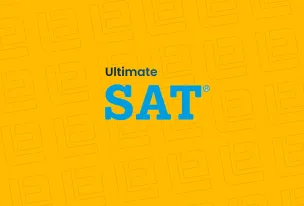Best Jakarta IELTS and TOEFL Preparation Course – The International English Language Testing System is known as IELTS. Over 10,000 entities, including educational institutions, governments, and professional associations, accept IELTS as proof of English language proficiency. The IELTS exam is meant to evaluate non-native speakers’ proficiency in the English language.
Test of English as a Foreign Language, known as TOEFL. The purpose of this test is to evaluate non-native speakers’ proficiency in the English language. More than 11,000 educational institutions and organizations in over 150 countries accept the TOEFL test, making it the most widely recognized English language proficiency test globally.
Context of Use

English language proficiency exams like the TOEFL and IELTS assess a person’s level of proficiency. Although both aim to measure English competency, they are used in different situations.
English-speaking nations including England, Australia, Canada, and New Zealand frequently employ IELTS (International English Language Testing System) for immigration and educational purposes. The test covers four categories: speaking, writing, reading, and listening. People often take the IELTS exam for academic purposes, such as college admissions and scholarships, as well as for immigration or work visas.
In the United States, the TOEFL (Test of English as a Foreign Language) is increasingly used for academic purposes. The test is divided into four categories: speaking, writing, reading, and listening. Government organizations or businesses frequently use the TOEFL test to assess the English language skills of employees or job candidates, particularly for university admissions or academic programs in the U.S.
Additionally, there are a number of variations in the test’s format and question kinds. The TOEFL test places more of an emphasis on academic English language ability than the IELTS test does on general English language skills. Additionally, the TOEFL exam is typically administered online, while the IELTS exam can be taken both online and offline.
It is crucial to take into account the intended usage and specifications of the institution or organization that will accept the test when choosing which one to take.
Test Format

The forms of the TOEFL and IELTS tests differ.
- The IELTS test has four sections: speaking, reading, and writing. The Listening and Reading sections use a multiple-choice format, whereas the Writing section consists of two tasks: Task 1 requires you to write a graph or figure, and Task 2 wants you to write an essay. A brief interview, free speech, and a discussion make up the speaking portion.
- The TOEFL exam has four sections as well: listening, reading, writing, and speaking. The Listening and Reading sections are multiple-choice exams, whereas the Writing section has two tasks: writing an essay and doing a text-based assignment. Six tasks make up the Speaking section: answering questions, outlining a subject, expressing a viewpoint, participating in a discussion, and finishing an integration activity.
They have various test lengths. IELTS takes about 2 hours and 45 minutes to complete, whereas the TOEFL takes about 3 hours and 30 minutes.
Depending on the objective and specifications of the institution or organization that will accept it, it is important to take into account the variations in test formats when selecting the exam to take.
Question Types

The TOEFL and IELTS exams feature different types of questions. Compared to the TOEFL, the IELTS test places more of emphasis on improving general English language proficiency.
- There are four parts to the IELTS listening test, each of which consists of one or two brief conversations or monologues and a number of multiple-choice, short-answer, and matching questions.
- Each of the three parts of the IELTS reading test, which assesses reading comprehension, contains lengthy texts and a range of question styles, including multiple-choice, short-answer, and matching.
- The IELTS writing test consists of two tasks. In the first task, the participant must create a report based on data from a graph or diagram, and in the second task, write an academic essay.
- There are three parts to the IELTS Speaking test: free speech, discussion, and brief interviews. Participants must be able to respond to questions from the interviewer in clear, concise English while speaking flexibly.
The TOEFL test’s questions are more difficult than those on the IELTS test because it places a greater emphasis on academic English language proficiency.
- Each of the four parts of the TOEFL’s listening section includes one or two brief conversations or monologues, followed by questions with multiple choices and short answers.
- Three to four academic texts with multiple choice, short answer, and combination questions make up the TOEFL’s Reading portion.
- Writing an essay and performing a task based on reading are the two tasks in the TOEFL writing section. The activity based on the text assesses the participant’s capacity to read, listen to, and organize academic material.
- Six tasks make up the Speaking section of the TOEFL: responding to questions, outlining subjects, expressing viewpoints, conversing, and finishing integrated tasks. Participants must be able to speak intelligently and engage in structured, in-depth discussions on academic material.
Scoring

The TOEFL and IELTS exams use different scoring scales. Each level of the IELTS scoring system has a 0.5-point difference and ranges from 0 to 9. The final IELTS score is the average of the four test sections. Educational institutions or government organizations typically require a minimum score of 5.5 to 7.5.
The minimum score needed varies depending on the requirements of the specific institution or organization. The TOEFL test has a scoring scale from 0 to 120. Institutions use the TOEFL iBT (Internet-Based Test) Listening, Reading, Speaking, and Writing subscores to evaluate participants’ proficiency in specific areas of the English language.
Duration

The time frames for IELTS and TOEFL vary. Following are the test lengths for each section:
IELTS:
- 30 minutes listening
- 60 minutes of reading
- sixty minutes of writing
- 11 to 14 minutes of speaking
IELTS lasts for approximately 2 hours and 45 minutes.
TOEFL:
- 60-90 minutes to listen
- Read for 60 to 80 minutes.
- Speaking: 20 minutes; Writing: 50 minutes
The TOEFL test lasts about three hours in total. During this time, test takers are evaluated across several key skills — reading, listening, speaking, and writing — each of which is designed to reflect how English is used in real academic settings. The structure of the TOEFL test encourages critical thinking and comprehension of complex ideas, making it a good measure of a student’s readiness for university-level study in an English-speaking environment.
Please note that test lengths may vary slightly depending on the location and type of test administered. Because of this, always be sure to read the instructions given by the test creator before beginning the test. Test centers in different countries might also have variations in their technical setup, so candidates are advised to arrive early and familiarize themselves with the environment. Having a clear understanding of the structure and timing can help you manage your energy and focus throughout the session.
Emphasis

When compared to the IELTS test, the TOEFL test places more emphasis on academic English usage. This means the tasks you encounter in TOEFL are typically based on classroom lectures, academic discussions, or university-level readings. For students who are planning to pursue higher education abroad, this emphasis on academic English makes TOEFL particularly beneficial, as it mirrors the types of challenges they will face once enrolled in an English-speaking university.
It’s critical to understand the English language test requirements of the university or educational institution you want to apply to before deciding between the TOEFL and IELTS exams. Check the English language test criteria carefully as certain universities may prefer TOEFL while others may choose IELTS. Some institutions even accept both, giving applicants the flexibility to choose whichever format suits their strengths best. For example, if you are more comfortable with computer-based tests, the TOEFL iBT format may be a more convenient choice compared to the IELTS, which often includes face-to-face speaking interviews.
Moreover, understanding how each section of the TOEFL works will help you build a better preparation strategy. The reading section requires comprehension of academic passages, while the listening section focuses on lectures and conversations in university contexts. The speaking part assesses your ability to express ideas clearly and coherently, and the writing section evaluates how well you can organize and support arguments using evidence and logical flow. These components make the TOEFL a comprehensive tool for assessing academic readiness in English.
To improve your TOEFL score, it’s advisable to practice consistently using official materials, take timed mock tests, and get feedback on your writing and speaking tasks. Joining a preparation course or online program can also help you gain insight into effective test-taking techniques. Remember that strong English proficiency takes time to build, so the earlier you start preparing, the more confident you’ll feel on test day.
In summary, while both TOEFL and IELTS are widely recognized English proficiency tests, the best choice depends on your goals, your preferred test format, and the institutions you are applying to. By doing careful research and consistent preparation, you can ensure that your test results truly reflect your English ability and open doors to global academic opportunities.





